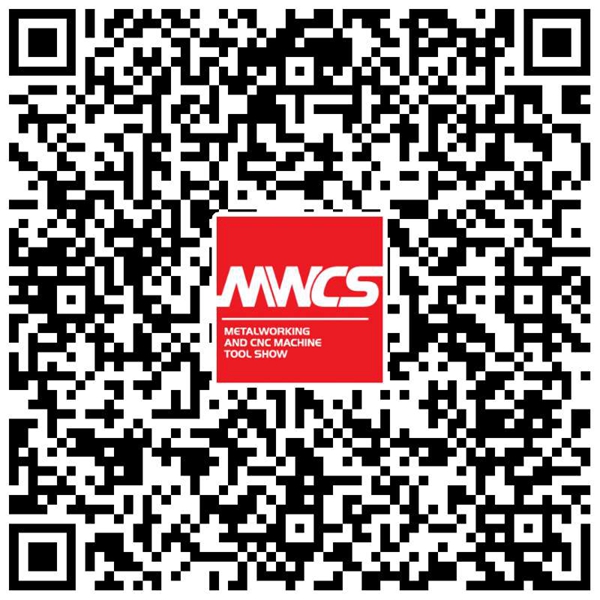Form, notch, punch, pierce, drill, tap, bevel, grind, weld—regardless of what you do to a tube or a pipe to get it ready to ship to your customer, the first operation is likely to be a cutting process. Although many cutting process choices have been available for decades, many of the machines in use today are far more advanced than their predecessors of just a few years ago. As tube and pipe materials are becoming more varied and competitive pressures more challenging, software, sensors, and control systems are getting more capable. The outcome? Equipment vendors have more choices in hardware and software, allowing them to develop machines that are faster, more accurate, more versatile, and more automated than ever before to help tube and pipe fabricators meet increasingly challenging cutting applications.
New Alloys, New Applications
The relentless pace of technology brings improved or entirely new products to the marketplace, and in many cases, those products are made from improved materials. In the metals industry, a key driver in alloy development is the automotive sector, which strives to meet ever-lower emissions targets and ever-higher fuel efficiency targets by implementing materials that are stronger and lighter than conventional metals. Although auto manufacturers use a variety of materials, such as aluminum and magnesium, quite a bit of every auto is still made from steel. Another driver is the petroleum industry, which relies on steel chemistries that can withstand the severe conditions of the offshore environment as drilling goes deeper than ever before.
Steel Advances. In response to these demands, the steel industry continues to supply new materials to the marketplace. According to the World Steel Association, steel is available in 3,500 grades.
Advanced high-strength steel alloys, high-strength/low-alloy materials, dual-phase steels, and transformation-induced plasticity steels have contributed to a minor upheaval in materials science. The latest materials have substantial strength improvements over common mild steel, such as SAE 1010, which has an ultimate tensile strength around 42,000 pounds per square inch (PSI).
“Ten years ago the average tensile strength for the automotive forging industry was 750 newtons per square millimeter (109,000 PSI) and the maximum blade speed for many saws was around 130 to 140 meters per minute (MPM) [445 feet per minute (FPM)],” said Daniel Johns, director of business development at “Ten years ago the average tensile strength for the automotive forging industry was 750 newtons per square millimeter (109,000 PSI) and the maximum blade speed for many saws was around 130 to 140 meters per minute (MPM) [445 feet per minute (FPM)],” said Daniel Johns, director of business development at Kinkelder USA.
The demands on a saw blade at that time were substantial, but much has changed in just a few years. Some of the latest materials are 30 percent stronger, 980 N/mm2, (142,000 PSI), and saws are running faster, often more than 200 MPM (656 FPM).
“Fifteen years ago we sold more general-purpose blades,” Johns said. “These days the market has a greater need for blades made for specific applications.” For example, ceramic-metal (cermet) blades met the requirements for about 80 percent of the bar stock applications just five years ago, whereas these days, about 80 percent of the applications call for coated carbide, he said.
“Coated carbide blades have higher tip strength and higher temperature resistance, so they can withstand cutting harder materials at higher speeds,” he said.
In addition to coatings that can help withstand heat up to 900 degrees C (1,600 degrees F), another strategy involves optimizing the tooth geometry, changing the cutting angles to match the steel grade, and changing the spacing to deal with the faster blade speed.
This isn’t to say that cermet has gone by the wayside. “They have exceptional blade life, so it’s still a good product when the material isn’t as hard and the saw doesn’t run as fast,” he said.
Cutting isn’t necessarily a single process, Johns said. In some cases, the heating caused by the friction adds a deforming component to the cutting process. The material heats, softens, and deforms a bit before the tooth pulls out a chip. Some applications, such as sawing duplex and nickel grades, require a positive geometry where cutting is mainly a shearing action. Understanding this difference and myriad other factors is the key in blade selection. The staff at Kinkelder has found that changing the blade can have a significant impact on blade life.
“One of our customers was cutting 17-4 stainless and getting about 7,400 cuts per blade,” Johns said. “We made a recommendation to change to a different geometry to address a very tight burr tolerance, and that customer is now getting about five times the service life, at about 37,000 cuts per blade.”
That’s an extreme case. If a blade isn’t optimal for the application, a 20 percent improvement is more likely. Regardless of the actual amount of improvement, Johns’s company sees itself as a cutting consultant first and a blade manufacturer second. That sounds counterintuitive: The company’s revenue is based on selling more blades, not fewer blades. However, that’s not the end of it. Like every other supplier of every other product, the company has a stake in its customers’ success, so it deploys its sawing knowledge for the benefit of its customers.
The company also does some research in conjunction with a saw builder, Rattunde Corp. The two companies have cooperated to improve cutting systems’ capabilities, such as cut squareness. A benefit to Kinkelder is its use of a Rattunde saw that tracks the blade’s rotation. Rattunde’s system tracks the location of each tooth so closely that, when making a multitude of cuts to test a blade for durability, it ensures that the initial contact with the workpiece is distributed evenly among all of the saw’s teeth.
Quality Advances. “Cut finish quality has always been a demand, but in the last few years, it has really taken off,” said Jon Hisey, director of business development of Rattunde Corp. “Twenty or thirty years ago a dimple in the end would be acceptable,” he said. “These days more and more users demand a clean, 90-degree, burr-free cut.” Hisey suspects this is related to downstream automation.
“Manufacturers are using more robotics, and robotic welders aren’t adept at dealing with inconsistency,” he said. “If a gap is too wide or varies, the robot doesn’t have the capability to deal with it. It just does the same thing over and over according to how its programmed.”
Although many manufacturers still seem to be wary of automation, for many it’s becoming inevitable, Hisey said.
“Many manufacturers still rely on manual labor to stack tubes as they come off of a cutting machine,” he explained. “If you have three guys doing that and one calls in sick, you just lost a third of your labor in that area.”
Automating several steps that often take place after cutting—say, measuring, etching, and packaging—gets a manufacturer out of such a jam, not just today, but every day.
Saving space is always a concern, and Rattunde responded to such concerns when it introduced a small-footprint machine to the market in 2019.
“Until recently, our smallest machine was a 2-m machine,” Hisey said, referring to the longest length it could cut. “We had some customers using that machine to make a 2-in. part. Our latest is a 1-m machine, which is much more practical for small parts, achieving much faster cycle times and using less floor space than our 2-m machine.”
Plumbing Advances. Soldering has long been a core joining process in the plumbing industry, but it has been giving way to crimping. Crimping requires no adhesives, no solder, and no heat. Making a crimped joint can cost more than making a soldered joint—a crimp fitting costs more than bit of solder and some flux—but it’s a faster process, so it provides a gain in the labor cost. The main caveat is that crimping requires pipe ends that are extremely straight and burr-free. Equipment manufacturer Reika GmbH makes processing lines for uncoiling and straightening copper pipe—and making straight, burr-free cuts—whether the material is thin- or thick-walled copper.
“For thin-walled copper, the system uses a chipless process,” said Joseph Kemple, president of Heiko Machine, Reika’s U.S. representative. For thick-walled applications, a process line uses the company’s patented Ring Saw. The Ring Saw’s blade is circular in shape, but unlike most circular saw blades, it is driven along its OD and the teeth are on the ID. The teeth are off-the-shelf carbide inserts that have four cutting faces and are mounted to machined seats with set screws. When one surface gets dull, the operator removes the teeth, rotates them 90 degrees, and reinstalls them.
The unique feature about the saw is the blade motion. In addition to rotating, the blade moves eccentrically. This allows the blade to approach the workpiece gradually as it oscillates around the workpiece. The combination of cutting tooth shape and blade motion is intended to leave no burr on the OD and negligible burr on the ID.
“It leaves no long strings of waste, little burr, and very small chips,” Kemple said. “These small chips fall harmlessly out of the machine, do not interfere with the operation, and are very easy to deal with,” he added.
Shearing Once or Twice
Shearing machines, favored for their speed and chipless cutting, have long been favored for high-volume/low-mix applications, but these days they are suitable for many low-volume/high-mix applications as well. The machines haven’t changed; the difference is in adding a modern control system and the necessary software.
For a fabrication shop that relies on a saw or two, a shear might not be a viable alternative. However, a fabricator pushing several saws hard all day long might be able to save quite a bit of floor space and material by switching to a single shear machine.
“A high-speed shearing machine can achieve an output on par with three to six saws,” said Steve Thiry, president of Haven Manufacturing Corp. Another benefit is that shearing doesn’t have a kerf, so it doesn’t waste a small amount of material on each cut.
Like every other decision, choosing an optimal cutting machine is a matter of weighing a handful of factors, one of which is part volume. For a tube fabrication shop that needs to make fewer than 50,000 straight cuts annually, a saw certainly is more likely to meet the production and return on investment targets than a shearing machine. If the volume gets to be much more than 50,000, a shear becomes increasingly attractive.
“If a fabricator needs to make 60,000 to 70,000 cuts a year in a variety of lengths and diameters, a shear might make sense,” Thiry said.
Haven is known for designing and building two distinctly different types of shearing machines: the supported shear, which uses a mandrel to prevent deformation as the shear blade cuts and parts the tube, and the dual-shear, which uses a lateral cutter to penetrate the tube’s wall and a shear to make the cut. The initial cut compromises the integrity of the tube wall so the shearing action can be carried out without dimpling in the tube.
Shearing Long and Short Parts. The company’s machines handle diameters from 0.25 to 5 in. Most of the machines it makes cut from 0.5 to 2.5 in. OD. While lengths from 12 to 18 in. are among the most common—lengths for making shock absorbers, a mainstay application—the company’s machines frequently are used for cutting lengths from 0.5 in. to 10 ft. long. They can achieve a length accuracy of ±0.002 in.
One Haven machine in use is cutting thin-wall tube in lengths of just 3/8 in. for making hose clamps. The machine makes 7,000 cuts per hour without distortion or material loss. A saw could make the part, but not at that speed, and the kerf would waste quite a bit of material as a percentage of each cut. A laser can also make a lossless cut, and while the cycle time would be short, making thousands of straight cuts per hour doesn’t take advantage of the laser machine’s greatest benefit: its versatility.
Dedicated to Lean Manufacturing. A shear also is a good candidate for low-volume/high-mix applications because the way it is used has changed over the decades. Known for providing a dazzling output—in some cases, up to 40 million parts per year—that aided batch production decades ago, shears are still dazzling today, but when equipped with modern control systems, the same machines assist with lean manufacturing and help with one-piece flow objectives.
“Years ago these were dedicated machines, set up to make a single part very quickly for hours on end. Those were the days of manual changeovers,” Thiry said. Today one of its customers uses a dual-shear system for making dog kennels. The tubular components for the kennels comprise five pieces cut to three lengths. Modern hardware and software allow the fabricator to cut the various lengths in the order in which they’re needed. The tube cutting operation produces a kit of five parts that is ready for the next operation. It’s fast, accurate, and lean.
Haven also uses its design expertise to develop custom-made material handling systems for the infeed side and can create entire integrated cutting cells.
Laser Cutting Updates for Manufacturing, Construction
Lasers that handle tubing and structural elements come in quite a few varieties. Among the most common are machines that grip long tube lengths with chucks and handle the most common tube and pipe sizes, up to 4 in. OD or so. Large-format machines include BLM GROUP’s LT24, which cuts diameters up to 24 in.; Bystronic’s M4 series, comprising the FL400 and FL600, which also cuts diameters up to 24 in.; Mazak’s Fabri Gear 400 II, which handles diameters up to 16 in.; and TRUMPF’s TruLaser Tube 7000, which cuts up to 10 in. dia.
Still other machines are made for cutting short lengths of tube, such as bent tubular assemblies, hydroformed tubular components, and other 3D shapes. Two such machines are Mazak’s VCL-T100, BLM GROUP’s LT-Free, and TRUMPF’s TruLaser Cell series machines.
Accommodations for Tube. In the early days of laser cutting sheet material, sheet products often weren’t flat enough to optimize the process. When the torch moved over the surface of a standard-sized sheet from one end to the other, the distance from the torch to the work surface varied too much. The steel industry adapted, and before too long, the commercial standard for sheet flatness improved to accommodate laser cutting.
Tube is a different product, made a different way, and used in a different industry segment. The tolerances are different, too.
“The industry norms for tube are less strict in dimensional deviations than for sheet,” said John Quigley, vice president of marketing for LVD Strippit. “Tube fabricators need laser systems that can handle substantial variations.”
Cutting programs are based on ideal dimensions, but tube and pipe products are rarely straight, and nonround products often exhibit some amount of twist. For accurate cutting, and to prevent collisions between the laser head and the workpiece, the machine has to determine the tube’s actual shape and position relative to the cutting head and then compare it to the expected shape to compensate for dimensional variations. LVD Strippit machines use an onboard laser measurement system to measure bow, and they compare the chuck positions to the steady rest positions to determine twist. To optimize the tube orientation relative to the weld seam, the company’s laser machines use an optical system based on the inputs of two cameras.
Pioneering loading system versatility, LVD Strippit’s machines were the first to have two loaders on one machine, one for bundles and one with a seven-position magazine for loading individual tubes. Having an automated bundle loader on one side of the machine and a single magazine loader on the other side gives the operator the best of both worlds. When using the bundle loader for a production run, he can interrupt that job and load a few tubes one by one to fulfill a rush job, then resume the first job.
Likewise Bystronic devised a loading and unloading strategy that speeds up processing. Its machines use four chucks, but processing a tube doesn’t require all four chucks all the time.
“While the laser head processes the last features on one tube, using the first two chucks, a second tube is loaded into the machine using the final two chucks,” said Brendon DiVincenzo, product manager of lasers and automation for Bystronic Inc. It also uses mandrels that float, allowing the machine to accommodate the bow and twist of an individual workpiece, while putting less stress on the chucks and increasing precision in the cutting zone.
TRUMPF’s TruLaser Tube 7000 also offers a few additional features that expand the possibilities in processing tube. Additional tools provide tapping for holes in heavy-wall tube and friction drilling and tapping for thin-wall tubes. It also has an optional mandrel that slips into the workpiece to protect the ID from spatter generated by the cutting process.
Big Diameters, Heavy Walls. Mazak Optonics Inc. estimates that the use of structural steel is projected to grow at 5.3% compound annual growth rate over the five-year span from 2018 to 2023. The drivers it cites are the federal government and the construction industry. The former deals with infrastructure and the latter concerns both residential and nonresidential construction. Two factors that favor laser-cut steel tubing for such applications are recyclability and speed of construction. About 90% of metals are recycled, and precise laser cutting facilitates fast joining.
A laser machine’s precision in making countersunk holes for fasteners, miter cuts for joint connections, and beveled ends for weld prep makes jobsite assembly and welding go faster than it would using conventional processes.
For such applications, Mazak’s machines provide six axes of control and four self-centering chucks to deal with the dimensional inconsistencies of tube and profile such as hollow structural section, I beam, H beam, and angle. The company’s direct-diode laser technology is 45% more energy-efficient than CO2 lasers and has 40% more power density compared to fiber lasers, according to Mazak.
To adjust to various workpiece geometries, TRUMPF’s machines use a self-centering collet chuck to prevent tube damage. The clamping system is combined with a sensor that provides continuous monitoring to make any necessary changes in the laser head’s path to prevent collisions.
BLM GROUP USA recently introduced its LT8.20, which has 3D capability and handles essentially any shape. It was designed to handle complex cutting patterns, hard-to-reach locations, and weld prep cuts on thick-walled tubes. It uses three features in the company’s Active series: Active Tilt for fast processing of small features; Active Weld, designed to optimize scrap detachment with large weld seams; and Active Focus, which handles changes in material and thickness.
Configuring the system with the chain loader on the front side reduces the system footprint by 20% and enables loading and unloading operations from the same side. This makes the system even more efficient for small-series production and small quantities.
CO2 or Solid State? In the laser arena, the CO2 laser is giving way to solid-state technologies. For the most part, this means fiber lasers, but TRUMPF has its proprietary TruDisk and Mazak has a direct-diode laser. Known for simplified beam delivery and much lower maintenance requirements than the CO2 variety, solid-state lasers provide more uptime and are less expensive to maintain. But this doesn’t mean that CO2 lasers are on the way out.
“Market demands for fiber lasers are growing, but CO2 lasers still have a place in manufacturing, just not the dominant one they had in the past,” DiVincenzo said. It’s not just a matter of replacing a resonator. The fiber laser light frequency is such that the machine design is quite a bit different from that of CO2 resonators. Fiber lasers need a completely enclosed cutting area, which can make loading and unloading material more complicated. The generally accepted performance advantages of fiber technology just don’t apply when cutting very large workpieces.
“The logistics of material handling are better for CO2 lasers,” he said.
Data Collection
Manufacturing has always thrived on data, whether measuring a machine’s uptime, clocking a specific part’s cycle time, taking measurements to single out nonconforming components, or gathering information from any of a thousand other data points manufacturers use to measure and improve operations.
In the last few years, data collection has grown by orders of magnitude in capability and quantity. The convergence of many technologies—sensors on machines that generate digital data, RFID tags on parts or bins of parts that generate tracking data, easy-to-scan QR codes that contain all sorts of information, Wi-Fi systems that move data from place to place, and software that organizes it all—allows manufacturers to set up systems that were unheard of just a few years ago.
Collecting data from key points in a manufacturing process, digitizing it, and turning it into a stream of useful information, updated continuously and available at any time, does more than eliminate paper or provide a real-time snapshot of manufacturing activity. The data can be integrated with the company’s enterprise resource planning (ERP) system to modify the production schedule, report depleted raw material inventory levels to trigger a purchasing action, and inform customers about order statuses so they can notify their customers and update their schedules. This information has a lot of significance up and down the value chain: a manufacturer might voluntarily embark on a journey to implement Industry 4.0 technology for his own benefit, or that manufacturer might go down this path to satisfy his customers’ needs.
This trend is playing out in the construction industry. These days, architects do more than make blueprints. They use building information modeling (BIM) software, which is an extremely sophisticated version of CAD that has some elements of ERP. It provides so much detail with so much precision that contractors can show up at the job site with supplies such as conduit, piping, and ductwork cut to the right lengths, or even fabricated into assemblies, so every component arrives ready for installation. They do much more work at their shops and much less at the job site and, as construction progresses, each contractor provides updates.
“Every installer can update the model, which triggers the next material order, which triggers the next production order, and so on” said Carroll Stokes, sales manager for T-Drill Industries Inc.
A request from a mechanical contractor some years back illuminated the possibilities for T-Drill. The contractor wanted a fully automated machine that could cut dozens of unique pipe components (straight parts and branch connections), print and apply a label (or two labels, one at each end, for lengthy parts), and sort them with a diverter table.
Initially the T-Drill staff was mystified. Why would a plumbing shop need a machine that sounded like it would be well-suited to a manufacturer? Later, when the staff understood the full scope of BIM, they understood how an automated machine could support such an endeavor. Access to the model helps everyone from the building’s owner to the smallest contractor understand the status of the various steps of the project, no matter how vast the project is.
The hardware likewise is always modernizing. Getting pipe into the machine, positioning it for cutting, performing the cut, advancing and retracting the collaring tools—these actions are accurate, fully controllable, and not terribly expensive when the actuators are servomotors, Stokes said.
“We have had 27 servos on one machine,” he said. “In the early 1990s the cost of a servo was about $5,000 per axis. These days it’s $1,500 to $2,000 per axis.” The two main servo attributes, speed and accuracy, come together in the output. “We can make 3,000 pieces, accurately, in an hour,” he said.
Pneumatic actuators likewise are fast and accurate, he said, but servos allow control over the entire motion profile, optimizing the feeding and cutting strokes. This isn’t to say that the machine’s cutting and collaring capabilities are more critical than connectivity. The two go hand-in-hand.
“To my knowledge, BIM is needed to bid on any municipal building, and this has been a requirement for the last six to eight years,” Stokes said. It’s not hard to connect the dots. For companies involved in construction, interfacing with BIM is becoming more critical all the time; therefore, for their suppliers, investing in equipment that has digital connectivity is becoming more critical all the time.
“It’s not just for construction,” Stokes added. “It’s also used in shipbuilding, which has similar considerations—a structure and hydraulic, pneumatic, electrical, water, fire suppression, and sewage systems.”
TRUMPF built a fully networked manufacturing facility in Hoffman Estates, Ill., to showcase these technologies. Although it’s not a tube-oriented operation, at least not yet, it illustrates the capability of digitizing everything critical to a manufacturing process.
When summoned by a work order, an automatically guided vehicle retrieves the necessary sheet material and stages it, initiating a process in which the material goes from machine to machine for cutting, punching, and bending.
For the most part, machine tending and material handling are automated. Transparency is a big part of the technology employed at the Smart Factory. Anyone with access to the system can use an internet connection from anywhere in the world to check on the status of an order.
It’s not just a showcase. The company makes bona fide parts, processing tons of steel every day. It’s not a matter of “maybe” or “possibly” or “perhaps” Industry 4.0 can be used in metal fabrication. This system has been up and running since Sept. 12, 2017.
From: The Tune & Pipe Journal








































